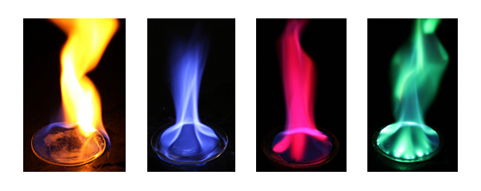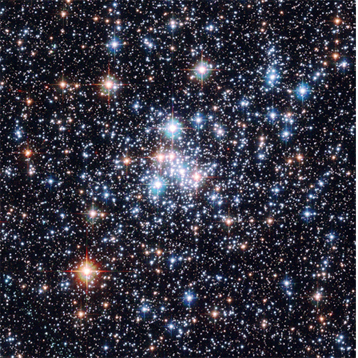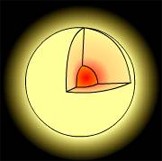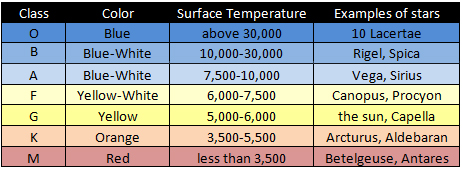
Source: Flame Test, Waski_the_Squirrel, Flickr
Stars may look like faint dots of light in the night sky, but stars are actually huge, hot, brilliant balls of gas located trillions of kilometers away from Earth. Stars produce their own light and energy by a process called nuclear fusion. So how do astronomers study stars when they are so far away? Astronomers study the light stars give off.
Study the image below. Why are the flames different colors?

Source: Flame Test, Waski_the_Squirrel, Flickr
The flames are different colors because different chemicals are being burned to produce the flames. Which flame is burning the hottest? Did you guess red? A lot of people associate the color red with the hot flames, but in fact the blue flame is the hottest.
If you look carefully at the night sky, you might notice different colored stars. Look at the stars in the picture below. Can you see the different colors?

Source: Different Colored Starts, Clark Planetarium
Stars are made up of different gases. Look at the diagram below. A star has two sections: the core and the outer gaseous shell. A star’s color is a result of the temperature of the star's outer layer.

Source: Diagram of a Star, Aspire
Like the flames pictured above, there is a relationship between temperature and color in stars. Red stars have the coolest surface temperatures, and blue stars have the hottest surface temperatures. Astronomers have created a classification system for star colors.
The chart below shows the types of stars and their surface temperatures.

Brightness of Stars: Look at the picture below of the streetlights; do they all look exactly the same? The ones closest to you look bright, and the ones farther away look dim.

Source: The Mist, Paul Marculescu, Fuel Your Photography
All the streetlights in this picture are the same. They are the same size and have the same energy output, but some lights appear brighter than others. How bright a light looks, or appears, is called apparent magnitude.
It is a star’s size, or energy output, not its distance from Earth that causes some stars to appear brighter than others. Astronomers use a star’s apparent magnitude and its distance from Earth to calculate its absolute magnitude. Absolute magnitude is the actual brightness of a star. If all the stars were the same distance from Earth, their absolute magnitude and their apparent magnitude would be the same.